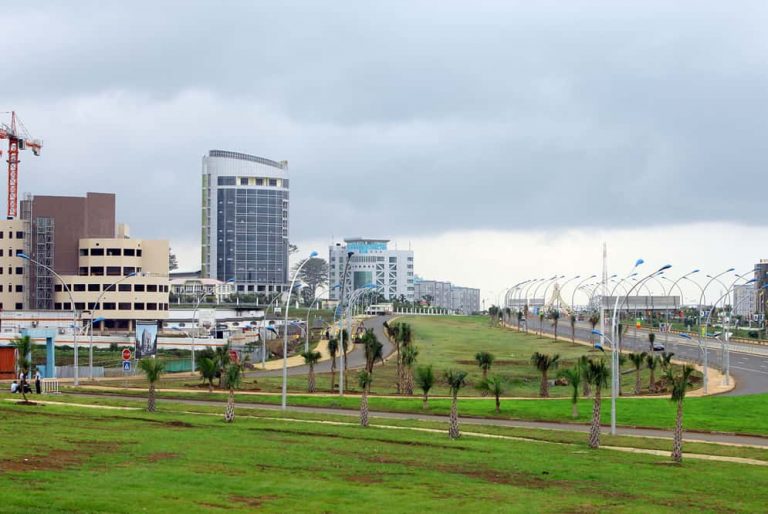Travel & Tourism
This tiny Central African nation, roughly the size of Maryland, is sub-Saharan Africa’s third-largest oil producer. Though this oil wealth has made it one of the most prosperous countries in the region, political upheaval and wealth inequality are problems that weigh on the country’s conscience.
That said, the country boasts a varied and spectacular terrain. Beautiful beaches and coastal plains turn to rolling hills in the interior. Its five islands are home to mountain peaks, volcanoes, and a variety of wildlife. Equatorial Guinea has no shortage of beaches, jungles, and natural sites worth seeing.
In recent years the infrastructure of Equatorial Guinea has vastly improved. Most of the country’s roads are now paved, and the number of airports and travel connections has risen. While the tourist industry is still in its infancy, independent travelers will find much to visit and explore.
What to Do in Equatorial Guinea
1. Malabo: The small but striking capital city abounds in Spanish colonial architecture and pleasant open plazas. The bustling market and the Spanish Colonial Center are worth a visit.
2. Climbing Volcanoes: The spectacular Pico Malabo volcano is an easy day trip from the city of Malabo. Arrange an expedition to take in its breathtaking views.
3. Beaches: The area around the mainland city of Bata boasts several beautiful and undeveloped beaches. Those at Mbini, just 32 miles (51.5 kilometers) south of Bata, are particularly gorgeous.
4. Local Liquors: Malamba, made from sugarcane, and osang, a type of African tea, are the national drinks. Locally brewed beer and palm wine are also abundant.
5. Market Shopping: Markets can be found in most cities and towns. In addition to local produce, bush meat, and textiles, many markets feature local handicrafts.
6. Monte Alen National Park: This park’s tropical forests are home to gorillas, elephants, chimpanzees, and many other creatures. Hire a local villager for a guided day trek through the park’s 870 miles (1,400 kilometers) of rain forest.
7. Bata Nightlife: This mainland city may feel small by day, but its nightlife is impressive. Be prepared for a long night;nightclubs typically don’t get going until quite late and are still jumping in the wee hours.
8. Moca Valley: Situated in the southern highlands of Bioko Island, this valley is home to the indigenous Buki people and offers plenty in the way of hiking and flora sightseeing.
9. Annobon: Head to the island of Annobon to see three of the country’s most famous mountain peaks, Pico del Fuega, Pico Centro, and Pico Surtado. Pico Surtado, the southernmost peak, is an inactive volcano whose crater now contains an impressive lake.
10. Arena Blanca: If you visit during the summer, Arena Blanca is a must-see. Its white-sand beaches are dazzling and enjoyable year-round. They literally come alive in the summertime with thousands of butterflies that nest there seasonally.
When to Go
The weather is tropical, with heavy rainfall for most of the year. Flash floods can make travel difficult in the rainy season. Between December and February, rainfall is gentler, and we suggest travel during those months.
Getting In and Around
Visas: A passport and a certificate showing current yellow fever immunization are required. Visas are required for all visitors except U.S. citizens. Check with your local embassy or government for details and latest updates.
Transportation: Several airlines offer regular international flights into Malabo, and regional airlines offer service between the island of Bioko and the mainland. There is ferry service between Malabo and Douala (Cameroon). On the mainland, taxis are available for travel within the country and to Cameroon and Gabon.
Mobile Phones: GSM phones work well in Equatorial Guinea. Plan to buy a SIM card you’re your arrival.
Safety and Security
Concerned about your safety as you plan travel to Equatorial Guinea? We at Africa.com, together with our friends, family and colleagues, travel extensively throughout the continent. Here are the resources we consult when thinking of our safety in Equatorial Guinea:
• UK Government Equatorial Guinea Travel Advice Guidance
Africa.com comment: Very timely and frequently updated. Perspective assumes that you ARE going to travel to Equatorial Guinea, and seeks to give you good guidance so that you understand the risks and are well informed.
• U.S. State Department Travel Advisory on Equatorial Guinea
Africa.com comment: Can sometimes be considered as overly conservative and discourage travel altogether to destinations that many reasonable people find acceptably secure. On the other hand, they have the resources of the CIA to inform them, so they know things that the rest of us don’t know. See what they have to say about Equatorial Guinea.
Local Advice
1. Equatorial Guinea is located on the coast of western Africa. The mainland is bordered by Cameroon to the north and Gabon to the east and south, with five inhabited islands scattered in the Gulf of Guinea.
2. Malabo is the capital. On the mainland, Bata is the major city.
3. Spanish is spoken by a majority of the population, though both Spanish and French are official languages. Fang and Bubi are the major native dialects.
4. The majority of the population practices Christianity, particularly Roman Catholicism, though some native religious practices are still adhered to.
5. Formerly called “Spanish Guinea,” the country officially named “Republic of Equatorial Guinea” is commonly referred to as “Equatorial Guinea.”

